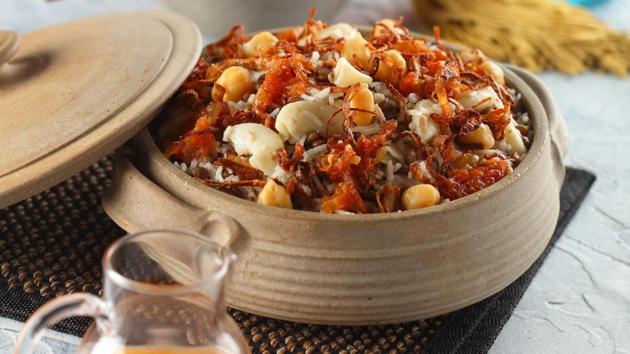As a rustic that becomes ruled with the aid of Middle Eastern kingdoms, we’ve disappointingly minimal know-how of their culinary treasure. We have increasingly become complicated Mughlai meals, amalgamating North Indian and Persian with Middle Eastern. But Middle Eastern fare is much more than biryani, shawarma, and kebabs.
Anshuman Bali, the government chef at JW Marriott Sahar Mumbai, explains, “There is a large distinction among each cuisine, though the origins might be equal. Mughlai cuisine advanced inside ancient India while Mughal invaders arrived. They brought uncooked materials, spices, cooking strategies, and eating behavior to their meals, and with the impact of Indian delicacies, which turned into the usual food that gave birth to Mughlai.”
Elaborating some more on the difference, Mufiz Rakhangi, director of Maffy’s Pan Arabian Bistro, Colaba, says, “Mughlai cuisine has several curries, spices, charcoal cooking, cooking usually completed in ghee, Butter, tandoor, and commonly heavy meals. Middle Eastern cuisine is mild, using olive oil, extra filling, steaming, moderate spices, bloodless plates or mezze, hand s saffron, dates, a, and culmination.”
With a host of eating places that exclusively serve genuine Middle Eastern fare, inclusive of Bay Route, Maffy’s, and Beirut, to call some, opening inside the metropolis over the last couple of months, we are surprised what created the buzz and why the delicacies have garnered such reputation in a quick period. “People are well-traveled and travel to distinct international locations exploring new traditions, cultures, and cuisines. So, they are extra open to experimenting and understanding foreign cuisines. Also, cognizance about culinary components and foreign cuisines has elevated because of travel, meal shows, food exhibitions, etc. Restaurateurs also want to explore and test with different cuisines,” says Rakhangi.
Some specific features that distinguish Middle Eastern cuisines from others are the skillful aggregate of candy and bitter ingredients and the liberal use of spices, including cinnamon, nutmeg, cloves, peppercorns, tamarind, ginger, turmeric, chilies, and allspice.
Their manner of serving food is in contrast to the usual way that we’re used to. Middle Eastern cuisine is not served in publications. A mezze, an inexhaustible platter of an exceptionally flavored range of impossible-to-resist nibbles served as appetizers or a meal itself, is served. Hummus, rice meat wrapped in vine leaves, mashed beans, hot and bloodless salads, grilled seafood, meats, and pickled veggies are the most popular.
Vegetarian alternatives galore
One might assume this delicacy might not have good options for vegetarians. But that is not the case in truth. Arjun Raj Kher, brand head at Bay route, highlights this factor, he says, “The primary food from the Middle East is vegetarian in its base. The biggest example is the bloodless mezze variety of direction hummus and falafel. These are all favorites, and they are vegetarian. There is never a scarcity of vegetarian meals in this vicinity. To call some, we’ve got koshari from Egypt, moussaka from Greece, tagine from Morocco, hummus and falafel from Lebanon, and gozleme from Turkey. It is just a little difficult to apprehend the names of dishes; however, as soon as you understand them, you may never forget them. Middle Eastern Cuisines are not only for the beef eaters but are shed by the vegetarians!”





